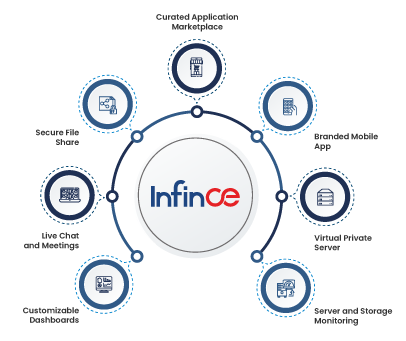A Closer Look At Top 5 Challenges Faced By Small Businesses While Adopting Technology
In today’s highly competitive market conditions, technology is often perceived as the key ingredient of success for businesses. But are small businesses able to handle their technology investments with ease to create disruptive market propositions?
Studies show that 95 percent of organizations face struggles with the technology they have chosen to bolster their business objectives. More often, companies face difficulties in handling the change in business operations that are brought about by technology solutions deployed across the length and breadth of the organization. From tools as simple as an attendance tracking system for employees to complex artificial intelligence-powered marketing automation tools for qualified leads and sales, the options available today have a wide variety of opportunities as well as challenges that businesses need to encounter while using them. You might have already been acquainted with a fair amount of possibilities that technology solutions open up for small businesses. Now it’s time to have a look at the key challenges that most small businesses face with their technology investments.
Here are our picks for the top 5 technology challenges that every small business address in their journey to create a successful market position through technology adoption:
1. Employee accessibility
While there are numerous technology options available to ease operations, the key challenge remains in how user-friendly the tools prove to be. Most small businesses opt for technologies that are customer-focused, ignoring the pain or stress the employees go through in implementing those technologies. Such an organization often does not have the luxury of dedicated training or L&D departments that are symbolic in every large organization.
Bigger companies utilize such departments to roll out a seamless transition and learning path for their workforce to learn and manage new technology roll-outs at ease. For smaller businesses, though, their workforce needs to chart out a learning plan by themselves and get acquainted with all facets of the new platform. The technology vendor may provide self-help videos and tutorials, but a formal training and induction practice for a new technology solution are seldom held to help employees feel more connected with the platform that is implemented.
2. Picking the right platform for success
If you seek a new technology solution to address a business problem today, there will be numerous vendors who will market their offerings as being superior to others. They will bombard your businesses decision-makers with presentations and other marketing collateral to convince them for an investment. But for small businesses, they often do not have a dedicated panel for evaluating a technology solutions worthiness and compatibility with their daily operational needs.
Since their core business is not technology, small business owners and decision-makers will not find it easy to arrive at a conclusion for picking a technology solution. They will not be familiar with the best standards in development, technology architectures, frameworks, and modern concepts and will mostly base their decisions on the cost involved. The cheapest solution will not be the most feasible in several occasions and in the long run, the business may end up spending more on maintaining and evolving the solution than what they would have spent on a better solution that had higher initial costs.
3. Connecting the solution to customer experience
For every business, the customer is the ultimate priority. Every investment in technology they make will have the underlying objective of translating into a better customer experience ultimately. This is true even if a technology is incorporated for operational efficiency as this will translate into better employee responses for customer interactions. However, smaller organizations often do not have a vision of how each technology investment they make will impact their end customer experience.
They often blindly copy the big players without evaluating whether their business actually needs a particular solution or not or how their end customers will benefit from this technology investment. This can prove to be very costly in the long run if they create bottlenecks at customer touch-points. Very often decision-makers do not ask the simple question of “How will this platform or software help me connect with my customers better?” and as a result, many investments in technology adoption often, leads to very little ROI.
Related Reading: Check out the small business digital trends to look out for in 2019.
4. Compatibility with vendors and partners
Today, small and big businesses have an ecosystem of partners and vendors that help them serve customer demands on time. These partners could be from multiple streams and verticals like logistics, operational assistance, raw material or resource supply, warehousing, security and much more. When onboarding a new technology platform, there are chances of the system not being interoperable with their technology ecosystem.
It happens when you on-board a system without proper system integration planning and execution. This will lead to the new platform requiring manual configurations or effort every time it needs to interact with an external system from a partner or vendor. It may also require you to custom build new modules to integrate partner technology systems for automating the entire value chain in the long run. This will lead to higher costs, which may become a huge deterrent for small businesses.
5. Getting the right advisory
Most small businesses might not have an expert IT council or advisory panel within their workforce due to cost pressures. However, bigger organizations often have in-house technology advisory teams that can evaluate and select suitable technology solutions for their prevailing issues. For small businesses, getting the right IT advisory partner or consulting partner is often not considered an option for fear of escalating budgets.
But what they fail to recognize is the negative impact their business can face due to the implementation of a wrong technology. In fact, addressing this challenge can turn into an answer for all the other challenges mentioned above. The right IT partner can help translate every technology investment into valuable additions for your business’s bottom line growth and profits.
Big or small, a business is always in a need for constant technology innovation. For small businesses, the challenges are even tougher as we have covered here. When emerging technologies like AI is becoming a mainstay for bigger businesses, studies have shown that only 8% of small and medium businesses are using it to actively connect with their customers. This needs to change significantly if they are to challenge the big names for customer lover.
Getting the right product, combined with the right IT skills advisory to simplify technology implementation, is the need of the hour. This is where INFINCE make a difference in the world of SMB’s. By analyzing the operations and challenges of small businesses worldwide, INFINCE is tailored to match your every need. Get in touch with our consultants today, to see how your business can benefit from the infinite cloud enterprise solution.







